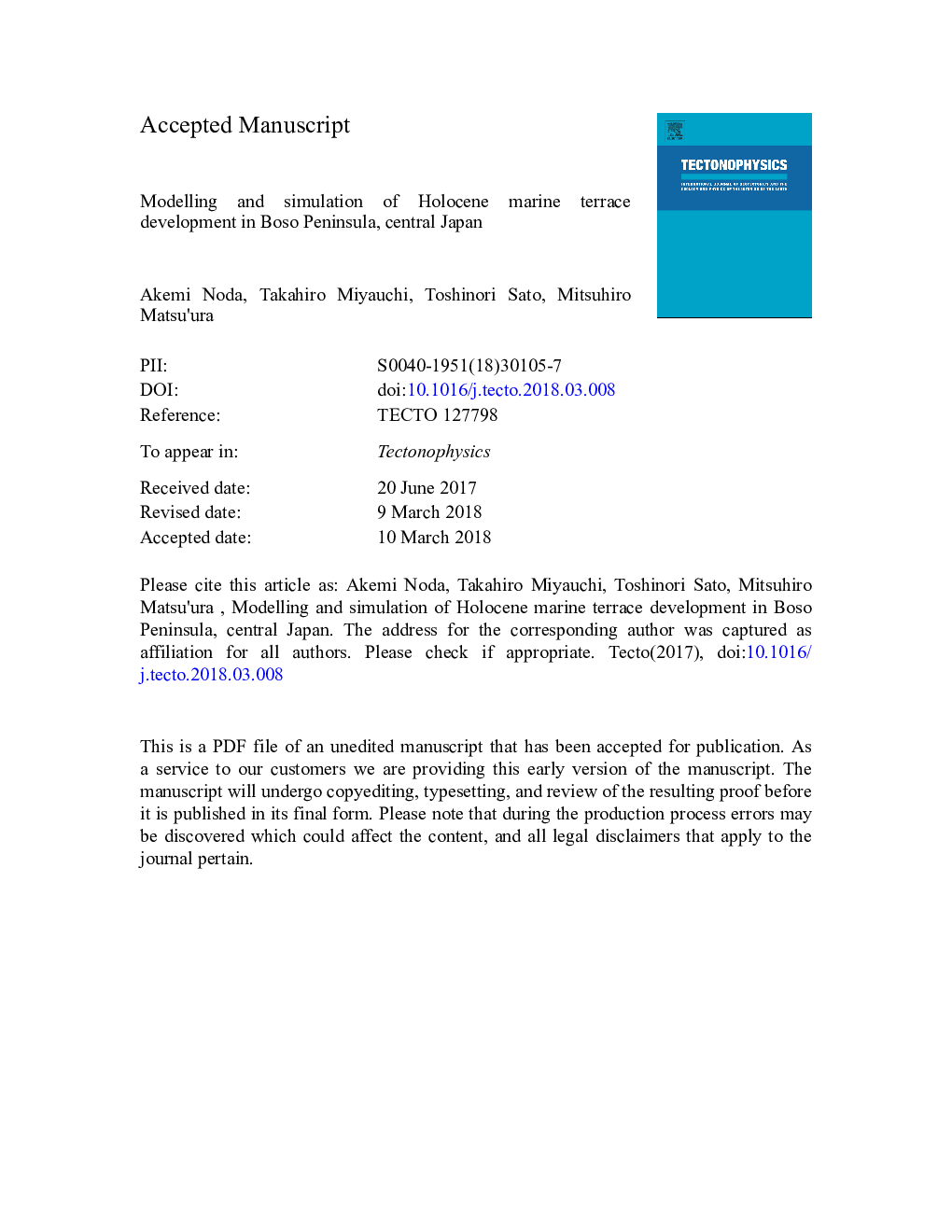| Article ID | Journal | Published Year | Pages | File Type |
|---|---|---|---|---|
| 8908715 | Tectonophysics | 2018 | 64 Pages |
Abstract
In the southern part of Boso Peninsula, central Japan, we can observe a series of well-developed Holocene marine terraces. We modeled the development of these marine terraces by considering sea-level fluctuation and steady land uplift. The evolution of coastal landform is generally described as follows: altitude changeâ¯=â¯ââ¯erosionâ¯+â¯depositionâ¯ââ¯sea-level riseâ¯+â¯land uplift. In this study, the erosion rate is supposed to be proportional to the dissipation rate of wave energy, and the deposition rate of eroded materials to decay exponentially as they are transported seaward. The rate of sea-level rise is given by the time derivative of a sea-level curve obtained from the sediment core records of oxygen isotope ratios. Steady plate subduction generally brings about steady crustal uplift/subsidence independently of earthquake occurrence, and so the land-uplift rate is regarded as time independent on a long-term average. Our simulation results show that a pair of sea cliff and abrasion platform is efficiently formed about a stationary point of the sea-level curve. The Holocene sea-level curve has four peaks and three troughs, and so basically seven terraces are formed one by one during the past 10,000â¯yr. However, when the land-uplift rate is low, most of the terraces formed at older times sink in the sea. When the land-uplift rate is high, the overlap and/or reverse of older and younger terraces occur frequently, and so the correspondence between the age and present altitude of terraces is not necessarily one-to-one. Taking the land-uplift rate to be 3-4â¯mm/yr, we can reproduce a series of well-developed Holocene marine terraces in Boso Peninsula independently of coseismic uplifts. From these simulation results, we may conclude that the Holocene marine terraces in Boso Peninsula were developed as a result of the composite process of sea-level fluctuation and steady coastal uplift.
Related Topics
Physical Sciences and Engineering
Earth and Planetary Sciences
Earth-Surface Processes
Authors
Akemi Noda, Takahiro Miyauchi, Toshinori Sato, Mitsuhiro Matsu'ura,
